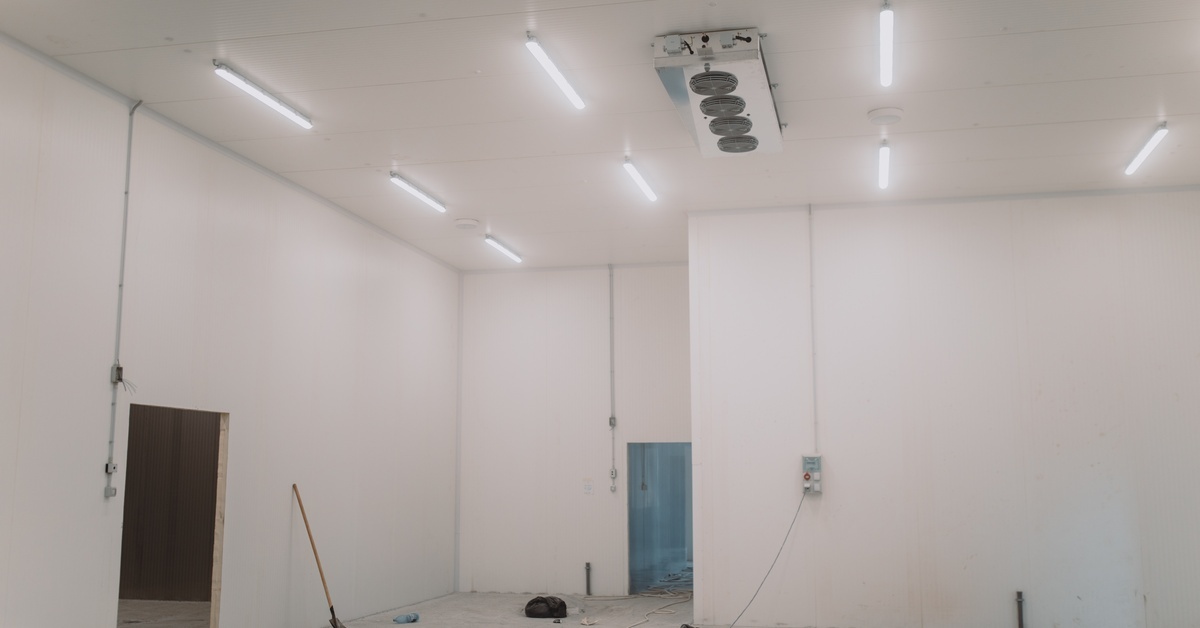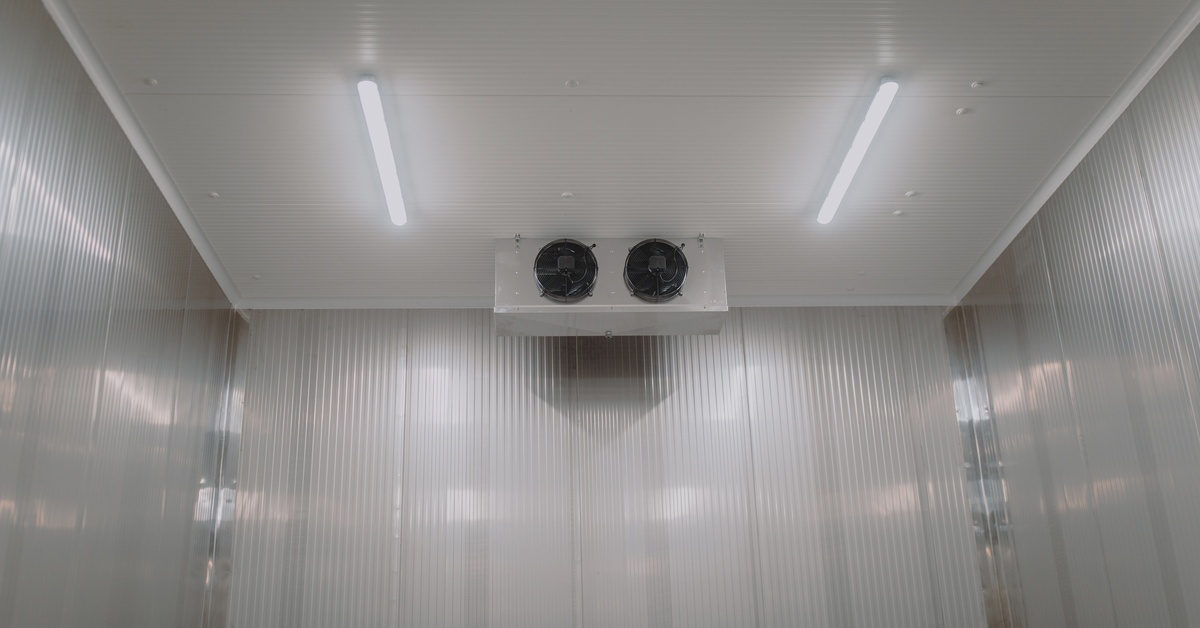Different Types of Insulated Panels for Walk-in Coolers
17th Jun 2025
Finding the right cooler for your business takes careful consideration. Different industries may need different sizes of coolers or different types of refrigeration units. There are many factors that go into making your cooler as efficient and reliable as possible.
An important element for your cooler is the insulated panel, which maintains consistent internal temperatures without using as much power from your refrigeration unit. The right panels can reduce energy usage and lengthen your unit’s lifespan.
Coolstructures is here to help you choose the best insulated panels for your needs. There are many different types of insulated panels for walk-in coolers, and each has its own pros and cons. Understanding the differences can help you get the most out of your investment.
Polyurethane Insulated Panels
One of the most common material options for cooler panels is polyurethane. This plastic material offers great insulation and low thermal conductivity. These panels are lightweight but incredibly durable, which makes them a good choice for indoor and outdoor applications.
A distinct advantage of this material is its high R-value, which refers to its effectiveness in resisting heat transfer. Walk-in coolers that use polyurethane panels can easily maintain their desired internal temperatures, which can reduce energy costs over time. Polyurethane is also adept at preventing moisture infiltration and the buildup of mold or mildew over time.
These panels are easy to install, and you can cut them to fit the shape and style of your cooler configurations. Despite their higher price point compared to some other materials, they remain popular due to their durability and excellent thermal performance.
Polystyrene Insulated Panels
Another common plastic option for insulation panels is polystyrene. There are two main types of polystyrene panels available for coolers and freezers: expanded polystyrene (EPS) and extruded polystyrene (XPS). Each type has its own set of benefits and use cases.
Expanded polystyrene panels are lightweight and cost-effective, making them a go-to for budget-conscious businesses. These panels provide adequate thermal insulation and resist moisture. But while they’re more affordable, EPS panels don’t insulate as well as polyurethane, especially in environments with high temperatures or humidity.
Extruded polystyrene offers greater durability, extreme resistance to water absorption, and excellent thermal insulation. It’s usually a good middle option between expanded polystyrene and polyurethane, and it works well for businesses looking for a balance of performance and cost-effectiveness.

Fiberglass-Insulated Panels
If you need something that’s durable and resists general wear and tear, fiberglass panels benefit heavy-duty workplaces. These panels are a popular choice for industries that frequently encounter harsh environmental conditions.
Fiberglass panels are corrosion-resistant, making them particularly suitable for applications in seafood processing, meatpacking, or environments with high humidity. The strength of fiberglass can withstand common damage like dings, scratches, or scuffs during daily operations.
While fiberglass panels may lack the thermal efficiency of polyurethane, they compensate by providing better structural integrity and resilience. Businesses seeking panels that can withstand demanding operational conditions, such as those in industrial food production, often turn to fiberglass as a reliable option.
Mineral Wool Insulated Panels
Another effective type of insulated panel for walk-in coolers is mineral wool. These panels use recycled materials from slag or minerals like basalt to provide acoustic insulation. They not only maintain cooler temperatures but also provide a safe, organic feel in commercial storage spaces.
These panels boast fire-resistant properties that make them perfect for businesses that utilize flammable materials, such as laboratories or pharmaceutical plants. The mineral wool serves as a barrier that can slow the spread of fire, providing more opportunities for emergency response efforts.
Mineral wool panels also provide soundproofing, which can be beneficial if your cooler uses a particularly loud refrigeration unit or fan. However, mineral wool panels are heavier than other materials like polystyrene or polyurethane. This additional weight can make installation more challenging and may require reinforced structural support.
Aluminum Insulated Panels
Another popular option for insulation is aluminum panels. Not only are they lightweight, but they are also highly resistant to corrosion. They suit industries that worry about excessive moisture like seafood storage.
Aluminum provides insulation by reflecting radiant heat away from the cooler. These panels maintain stable internal temperatures, despite the aluminum itself not offering many insulating properties. Industries should pair these panels with polyurethane or polystyrene cores to enhance thermal resistance.
Aluminum panels are valued for their smooth and sleek appearance, making them excellent for businesses that prioritize aesthetics alongside functionality. They also offer easy cleaning and maintenance, which are essential for maintaining hygiene in food storage and preparation settings.

Stainless Steel Insulated Panels
Stainless steel is one of the best options for industries that require strict sanitary conditions. Steel boasts a nonporous surface that keeps it free from bacteria, mold, and other contaminants and makes it easy to clean. It’s preferable for food storage, pharmaceutical applications, and laboratory environments.
Stainless steel panels are highly durable and resistant to impacts, scratches, and corrosion. However, much like aluminum panels, they require an insulating core to achieve appropriate thermal resistance. Combining stainless steel with a polyurethane core delivers exceptional durability and top-tier insulation.
Stainless steel is more expensive than other materials, so it’s best for businesses or industries that require the main benefits that it has to offer.
Foam Core Panels
Foam core panels are a versatile solution for walk-in coolers and use a rigid foam core to provide insulation. These panels may use different types of foam to offer varying levels of thermal efficiency and cost-effectiveness.
Polyurethane foam cores offer the highest insulating performance, while polyisocyanurate (PIR) cores balance thermal properties with improved fire resistance. Foam core panels are lightweight, easy to handle, and suitable for a wide range of commercial applications.
Choosing the Right Panels for Your Business Needs
Selecting the right type of insulated panels is a critical decision for businesses that rely on walk-in coolers. Each panel type offers unique advantages and trade-offs, making it essential to identify your operation’s requirements.
For top-tier walk-in cooler panels that meet your operational needs, trust Coolstructures to deliver unmatched quality and performance. Contact us today to discuss how our customizable solutions can enhance your business’s efficiency and reliability!


